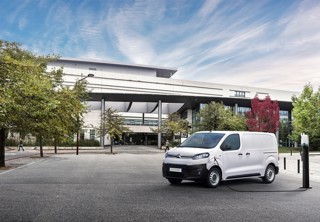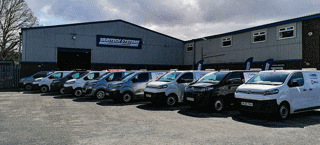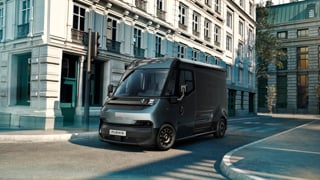Falkirk Council has made the first step towards a fully electric fleet, with the addition of seven new Citroen e-Dispatch vans.
The local authority utilised the ‘Switched on Towns and Cities Challenge Fund’ and ‘Switched on Fleet Fund’ to support its funding of the new additions to the fleet.
Since arriving, the vehicles have been deployed to support essential building maintenance work throughout the council region, helping to improve and further develop facilities for its residents.
Laura Campbell, fleet co-ordinator for Falkirk Council, said: “The introduction of new Citroen e-Dispatch to our fleet will give us the confidence that we can undertake our services in an environmental and cost-effective way, without any compromise to practical necessities like load space and vehicle range.”
Falkirk Council opted for Enterprise-spec vans with XS body length and a 50kWh battery, giving a range of approximately 143 miles between charges. The vehicles were supplied by Arnold Cark, Armadale.
The e-Dispatch won approval from the council thanks to its practical range and sizeable load capacity, while additions such as a pipe carrier roof rack and plywood lining allow further functionality for everyday use.
Available with a choice of two battery sizes, the e-Dispatch is capable of up to 205 miles (WLTP) when equipped with the larger 75kWh battery pack. It can be charged at home or on site through a 7kW wallbox, or via a super-fast public charging station at speeds of up to 100kW that can re-charge the battery to 80% of capacity in just 30 or 45 minutes, for 50kWh and 75kWh versions respectively.
The battery has been positioned under the floor of the vehicle to maximise load space, providing up to 6.6 cuboc metres of load volume and a payload of up to 1,002kg.
Scott Westerby, Citroën UK’s fleet director, added: "I am proud that the Citroen e-Dispatch has been selected as the electric LCV of choice in Falkirk Council’s latest round of procurement. A key model in our electric vehicle range, new e-Dispatch is an ideal solution for public and private sector operators alike, as it strikes a perfect balance between maintaining all the capacity of non-electric versions, and offering zero tailpipe emissions with significant whole life cost benefits.”






















Login to comment
Comments
No comments have been made yet.